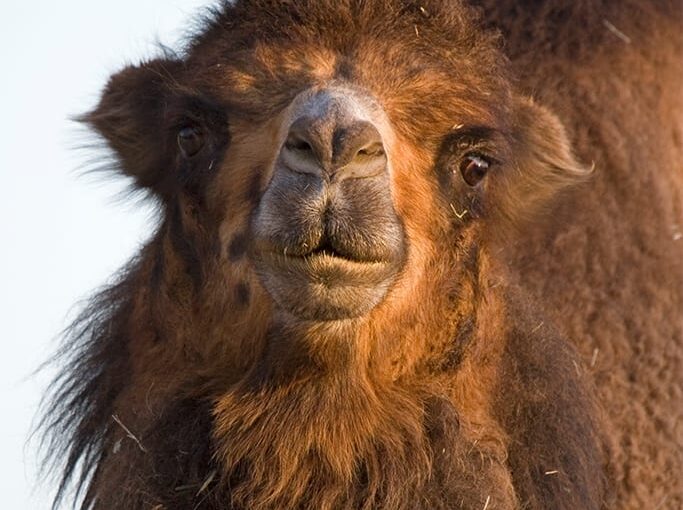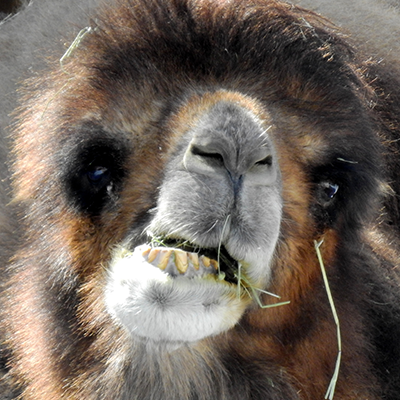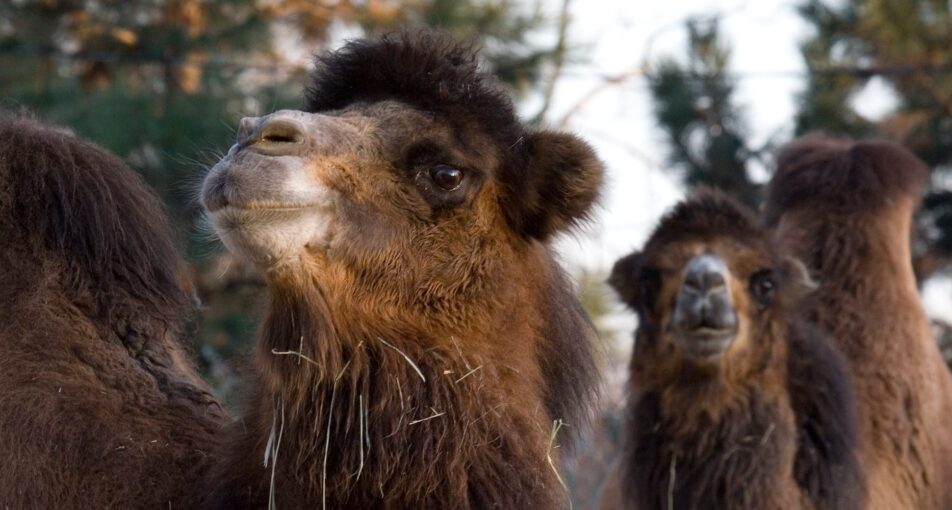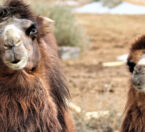Bactrian camels have long eyelashes in double rows and a third eyelid which acts like a windshield wiper to wash sand or dirt out of their eyes. Their nostrils can close to provide protection from blowing sand. Their broad, flat feet have leathery pads and two toes on each foot which helps prevent them from sinking into sand or snow.
Classification
| CLASS: | Mammalia |
| ORDER: | Artiodactyla |
| FAMILY: | Camelidae |
| GENUS: | Camelus |
| SPECIES: | bactrianus |
Habitat & Range
Asian deserts or grassy steppes where the climate can range from very hot to very cold. Wild camels live in the Gobi desert.
The Bactrian camel occupies habitats in Central Asia from Afghanistan to China, primarily up into the Mongolian steppes and the Gobi desert.
Location


Adaptations
Two Humps
Bactrian camels have two humps – like the letter “B”. The humps are used to store fat that converts to energy when needed. Bactrian camels are shorter and heavier than the one-humped dromedary camels found in Africa and the Middle East.
Big Gulp
Camels have a remarkable ability to survive for long periods (months!) without any water. When camels drink they can drink up to 35 gallons of water at a time. To keep moisture in their body, camels do not sweat very much, and they also have very concentrated urine.
“Ships of the Desert”
Bactrian camels have long eyelashes in double rows and a third eyelid which acts like a windshield wiper to wash sand or dirt out of their eyes. Their nostrils can close to provide protection from blowing sand. Their broad, flat feet have leathery pads and two toes on each foot which helps prevent them from sinking into sand or snow.
Physical Description
- Bactrian camels are up to 10 feet (3.0 m) long.
- Weigh 1300-2200 pounds (590-1000 kg).
- Wild Bactrian camels are smaller and more slender.
- Their fur color varies from beige to dark brown.
- They have thick, wooly coats that provide warmth during the cold months and insulation from the desert heat, and they shed this for the summer months.
- Bactrian camels have two humps on the back.
Diet
What Does It Eat?
In the wild:
Thorny plants, and plants that are salty, bitter and prickly.
At the zoo:
Hay and a grain mixture.
What Eats It?
Wolves prey on the Bactrian camel.
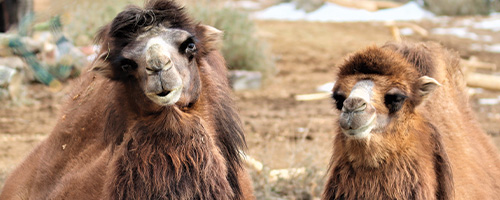
Social Organization
Domestic camels travel in groups of up to 20 individuals. The groups are led by a dominant male and include several females, sub-adults and young.
Life Cycle
Camels are sexually mature by five years. Mating occurs year-round. After a gestation of 12-15 months females give birth to a single calf weighing up to 100 pounds (45 kg). Calves can stand soon after birth, are weaned at one to two years and stay with the mother until they reach maturity. Life span of the domestic Bactrian camel is approximately 40 years.

